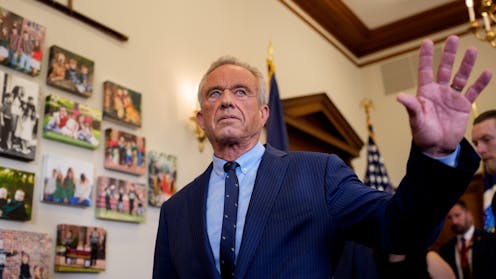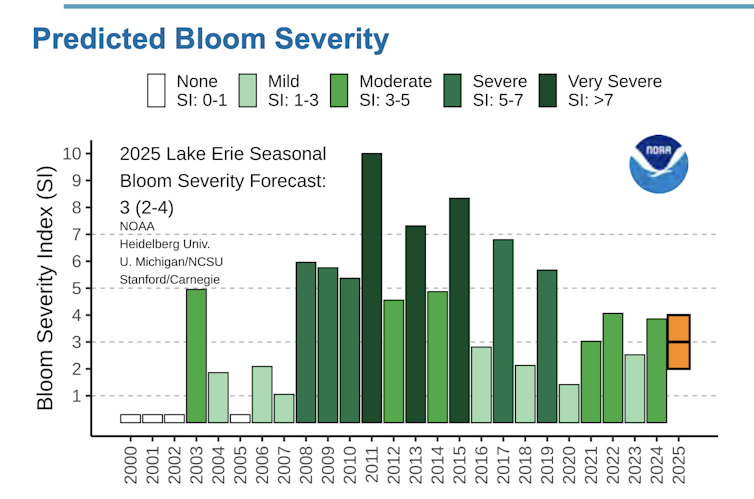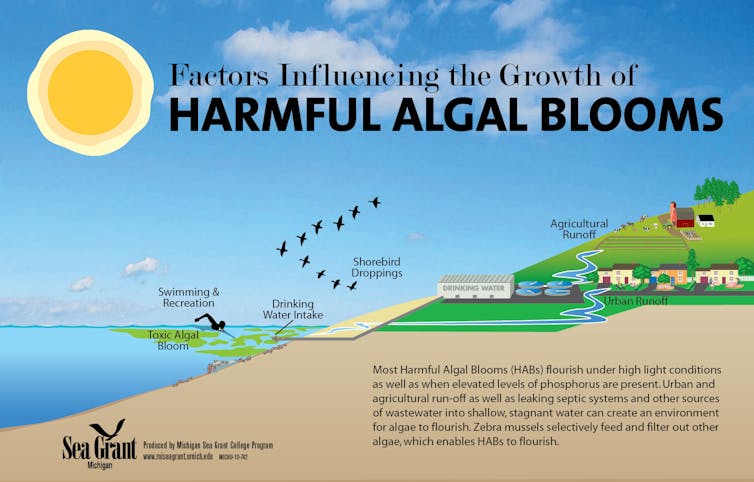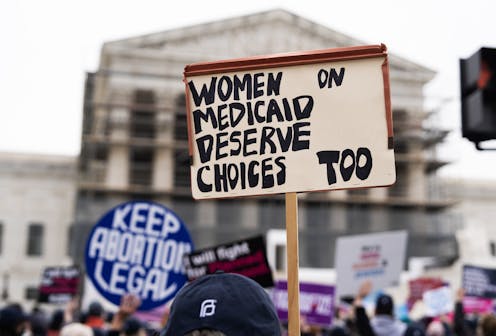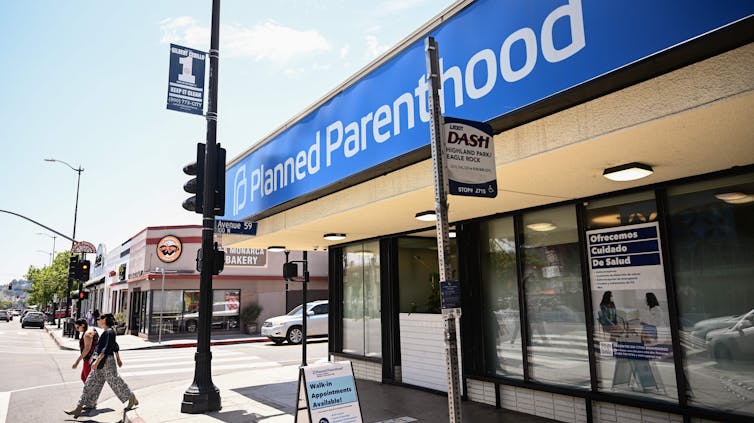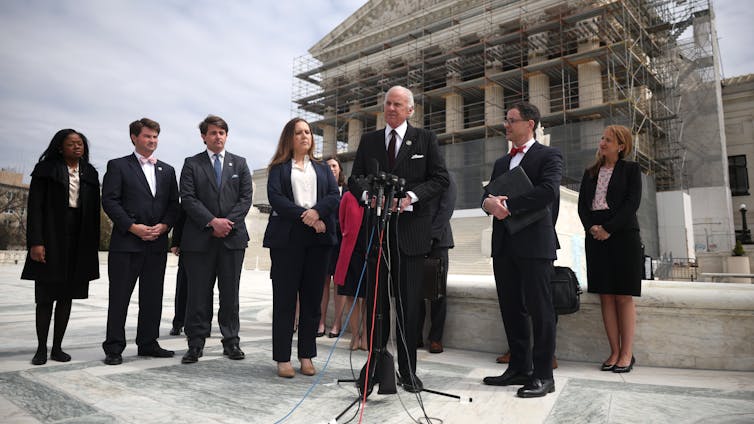Source: – By Michael R. Allen, Visiting Assistant Professor of History, West Virginia University

President Donald Trump’s proposed fiscal year 2026 discretionary budget is called a “skinny budget” because it’s short on line-by-line details.
But historic preservation efforts in the U.S. did get a mention – and they might as well be skinned to the bone.
Trump has proposed to slash funding for the federal Historic Preservation Fund to only $11 million, which is $158 million less than the fund’s previous reauthorization in 2024. The presidential discretionary budget, however, always heads to Congress for appropriation. And Congress always makes changes.
That said, the Trump administration hasn’t even released the $188 million that Congress appropriated for the fund for the 2025 fiscal year, essentially impounding the funding stream that Congress created in 1976 for historic preservation activities across the nation.
I’m a scholar of historic preservation who’s worked to secure historic designations for buildings and entire neighborhoods. I’ve worked on projects that range from making distressed neighborhoods in St. Louis eligible for historic tax credits to surveying Cold War-era hangars and buildings on seven U.S. Air Force bases.
I’ve seen the ways in which the Historic Preservation Fund helps local communities maintain and rehabilitate their rich architectural history, sparing it from deterioration, the wrecking ball or the pressures of the private market.
A rare, deficit-neutral funding model
Most Americans probably don’t realize that the task of historic preservation largely falls to individual states and Native American tribes.
The National Historic Preservation Act that President Lyndon B. Johnson signed into law in 1966 requires states and tribes to handle everything from identifying potential historic sites to reviewing the impact of interstate highway projects on archaeological sites and historic buildings. States and tribes are also responsible for reviewing nominations of sites in the National Register of Historic Places, the nation’s official list of properties deemed worthy of preservation.
However, many states and tribes didn’t have the capacity to adequately tackle the mandates of the 1966 act. So the Historic Preservation Fund was formed a decade later to alleviate these costs by funneling federal resources into these efforts.
The fund is actually the product of a conservative, limited-government approach.
Created during Gerald Ford’s administration, it has a revenue-neutral model, meaning that no tax dollars pay for the program. Instead, it’s funded by private lease royalties from the Outer Continental Shelf oil and gas reserves.
Most of these reserves are located in federal waters in the Gulf of Mexico and off the coast of Alaska. Private companies that receive a permit to extract from them must agree to a lease with the federal government. Royalties from their oil and gas sales accrue in federally controlled accounts under the terms of these leases. The Office of Natural Resources Revenue then directs 1.5% of the total royalties to the Historic Preservation Fund.
Congress must continually reauthorize the amount of funding reserved for the Historic Preservation Fund, or it goes unfunded.

Winslow Townson/Getty Images
Despite bipartisan support, the fund has been threatened in the past. President Ronald Reagan attempted to do exactly what Trump is doing now by making no request for funding at all in his 1983 budget. Yet the fund has nonetheless been reauthorized six times since its inception, with terms ranging from five to 10 years.
The program is a crucial source of funding, particularly in small towns and rural America, where privately raised cultural heritage funds are harder to come by. It provides grants for the preservation of buildings and geographical areas that hold historical, cultural or spiritual significance in underrepresented communities. And it’s even involved in projects tied to the nation’s 250th birthday in 2026, such as the rehabilitation of the home in New Jersey where George Washington was stationed during the winter of 1778-79 and the restoration of Rhode Island’s Old State House.
Filling financial gaps
I’ve witnessed the fund’s impact firsthand in small communities across the nation.
Edwardsville, Illinois, a suburb of St. Louis, is home to the Leclaire Historic District. In the 1970s, it was added to the National Register of Historic Places. The national designation recognized the historic significance of the district, protecting it against any adverse impacts from federal infrastructure funding. It also made tax credits available to the town. Edwardsville then designated LeClaire a local historic district so that it could legally protect the indelible architectural features of its homes, from original decorative details to the layouts of front porches.
Despite the designation, however, there was no clear inventory of the hundreds of houses in the district. A few paid staffers and a volunteer citizen commission not only had to review proposed renovations and demolitions, but they also had to figure out which buildings even contributed to LeClaire’s significance and which ones did not – and thus did not need to be tied up in red tape.

Friends of Leclaire
Edwardsville was able to secure a grant through the Illinois State Historic Preservation Office thanks to a funding match enabled by money disbursed to Illinois via the Historic Preservation Fund.
In 2013, my team created an updated inventory of the historic district, making it easier for the local commission to determine which houses should be reviewed carefully and which ones don’t need to be reviewed at all.
Oil money better than no money
The historic preservation field, not surprisingly, has come out strongly against Trump’s proposal to defund the Historic Preservation Fund.
Nonetheless, there have been debates within the field over the fund’s dependence on the fossil fuel industry, which was the trade-off that preservationists made decades ago when they crafted the funding model.
In the 1970s, amid the national energy crisis, conservation of existing buildings was seen as a worthy ecological goal, since demolition and new construction required fossil fuels. To preservationists, diverting federal carbon royalties seemed like a power play.
But with the effects of climate change becoming impossible to ignore, some preservationists are starting to more openly critique both the ethics and the wisdom of tapping into a pool of money created through the profits of the oil and gas industry. I’ve recently wondered myself if continued depletion of fossil fuels means that preservationists won’t be able to count on the Historic Preservation Fund as a long-term source of funding.
That said, you’d be hard-pressed to find a preservationist who thinks that destroying the Historic Preservation Fund would be a good first step in shaping a more visionary policy.
For now, Trump’s administration has only sown chaos in the field of historic preservation. Already, Ohio has laid off one-third of the staffers in its State Historic Preservation Office due to the impoundment of federal funds. More state preservation offices may follow suit. The National Council of State Historic Preservation Officers predicts that states soon could be unable to perform their federally mandated duties.
Unfortunately, many people advocating for places important to their towns and neighborhoods may end up learning the hard way just what the Historic Preservation Fund does.
![]()
Michael R. Allen is a member of the Advisor Leadership Team of the National Trust for Historic Preservation.
– ref. Trump administration aims to slash funds that preserve the nation’s rich architectural and cultural history – https://theconversation.com/trump-administration-aims-to-slash-funds-that-preserve-the-nations-rich-architectural-and-cultural-history-258889













